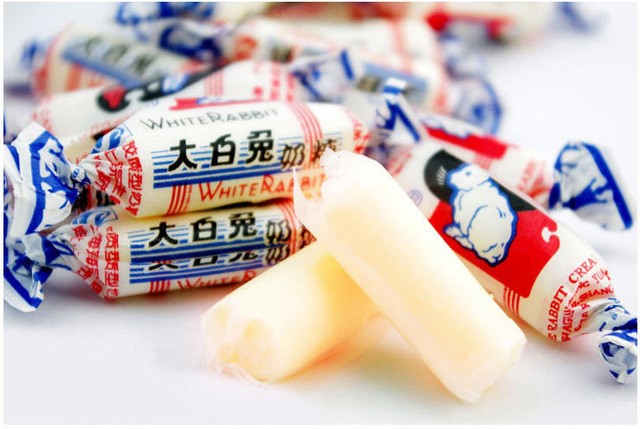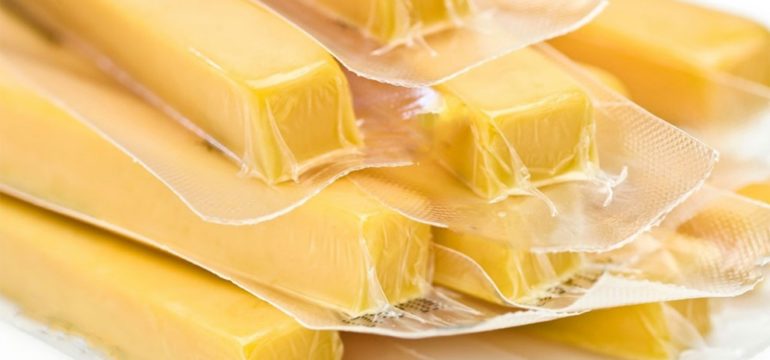BY: AMELIA CHEN
There is no shortage of laughably absurd images on the Internet, but I think this one is up there for me:

https://www.today.com/food/peeled-oranges-plastic-whole-foods-gets-pulped-social-media-practice-t77806
I know sometimes it’s hard to avoid plastic packaging at the grocery store, but I think nature already had this one figured out.
One woman even tweeted, “If only nature would find a way to cover these oranges so we didn’t need to waste so much plastic on them. “ – Nathalie Gordon (March 3, 2016)
Sustainable packaging is a pervasive topic in today’s day and age. Nowadays it’s hard to imagine a food product without functional, informative, and often eye-catching packaging. But, in a time when convenience and extended shelf life are also major considerations in developing new products, it can be hard to escape excessive packaging. How do we balance the convenience of individual serving size packs and grab-and-go containers with reducing packaging materials? When I think about sustainable packaging, it has always been associated with recyclable paper or cardboard. If you could throw it in the recycling bin, then it’s environmentally friendly, right? But even recyclable materials have a life cycle. So what if you could could go one step further? Instead of worrying about accumulating trash… or which colored bin to throw the packaging material in, what if you could just eat all your packaging?! Well those days may be closer than we think!

https://www.aliexpress.com/item/Free-Shipping-White-Rabbit-creamy-candy-500g-Bulk-Delicious-Chinese-Snacks-Sweet-and-Candy/32375113202.html
My first experience with edible packaging was Chinese White Rabbit candies, which is a chewy, white milk taffy-like candy with a sticky rice wrapper that dissolves readily in your mouth. It’s not the only layer of packaging, but the fact that I could eat a wrapper was still revolutionary to me as a young child. Eventually, I learned about examples of edible wrappers that can stand on their own and edible cups and straws, both of which utilize the strong gel-forming combinations of calcium chloride, agar, carrageenan, and sodium alginate derived from seaweed.
Other types of edible films, which are made from generally recognized as safe (GRAS) ingredients, are both biodegradable and environmentally friendly. In addition, on their own, they are tasteless and do not affect the organoleptic properties of the product, while possessing good nutritional value. They can also be fortified with vitamins and minerals or infused with flavor. Proteins, polysaccharides, starches, and lipids are all possible starting materials for films, and they each provide unique benefits. In general, proteins provide mechanical strength, polysaccharides and starches control gas transmission, and lipids reduce water transmission.
Blends of these main components allow us to optimize the film properties that will best maintain water and gas transmission rate, which helps to extend the expiration date of the product [2].
Personally, out of the many edible film options I encountered through my research, I was most intrigued by cheese…wrapped in cheese! Not literally, but USDA researchers have created a packaging film using milk proteins [1].
Before we learn more about the awesome invention of cheese wrapped in cheese,some background. Proteins used to make edible films include casein (milk), whey (milk), soy, corn zein, collagen, wheat gluten, keratin, and egg albumen. Their inherent functional properties are what make proteins such good starting materials for film formation. A distribution of polar, nonpolar, and charged amino acids allows proteins to interact and stabilize a film via electrostatic, hydrophobic, covalent bonding, and van der Waals forces, especially in emulsified systems where molecules with both hydrophilic and hydrophobic properties are needed. Historically, protein films are best used as coatings that are formed directly onto the product, especially fruits and vegetables that are not packaged, to reduce chemical or microbial damage from spoilage organisms [2].
While proteins are great at forming a strong structure, plasticizers are used to achieve a flexible film with improved mechanical properties, such as flexibility and elasticity. These are small molecular weight compounds such as glycerol, sorbitol, and sucrose create more flow between the protein strands by binding to hydrogen-bonding regions in the protein. Without something like glycerol in the formulation, protein films would become extremely brittle when dried and thus, have limited applicability as a film as the film would quickly flake off. Glycerol molecules insert themselves between protein chains to reduce some of the intermolecular forces [2].
And that’s all it takes – protein and plasticizer, and of course, water to solubilize the two. The ability to modify protein chains via their amino acid side groups also gives us more techniques to improve physical or chemical properties of edible films. One example of this is through enzymatic or chemical cross-linking of protein chains to improve mechanical properties. The solution is then poured or spread onto a flat surface to control film thickness and dried under controlled temperature and humidity. And for thicker and more viscous solutions, films can be extruded into a coagulation bath before plasticizing and drying [3].

https://www.engadget.com/2016/08/22/edible-milk-film-preserves-food-better-plastic/
So, now that we all have a good background as to what a protein film is, let’s get back to those cheese on cheese films. Historically, caseins used to be crosslinked with formaldehyde to make a hard plastic-like material and widely used to make non-food consumer products, such as buttons and pen cases [2]. However, with the use of formaldehyde in these plastics, the products were extremely toxic and unfit for food use. Eventually, it was shown that casein (and whey) proteins could form flexible and transparent films that are useful in food applications. USDA researchers developed a casein film that resembles plastic wrap but is “less stretchy” and “better at blocking oxygen,” thanks to its smaller pores [1]. These casein films are reportedly “500 times better than plastics at keeping oxygen away from food” to help prevent spoilage of cheese. But, in this cheese on cheese dream world, there are drawbacks. One of these for pure protein films is that they are highly water soluble. However, to combat this problem, researchers have added citrus pectin to improve film strength and resistance to high temperatures and humidity.
And if you have an allergy to milk proteins? Not a problem. There are so many other ingredients – polysaccharides, starches, lipids – you can choose from to make another edible film, the applications become endless.
Though edible films are not an entirely new technology, the applications that are popping up are definitely more inventive and suited for the way we’re trending towards sustainability and convenience. Maybe the next step will be selling oranges without their peel…after they’ve been dipped in some edible coating of course.






Leave a Reply